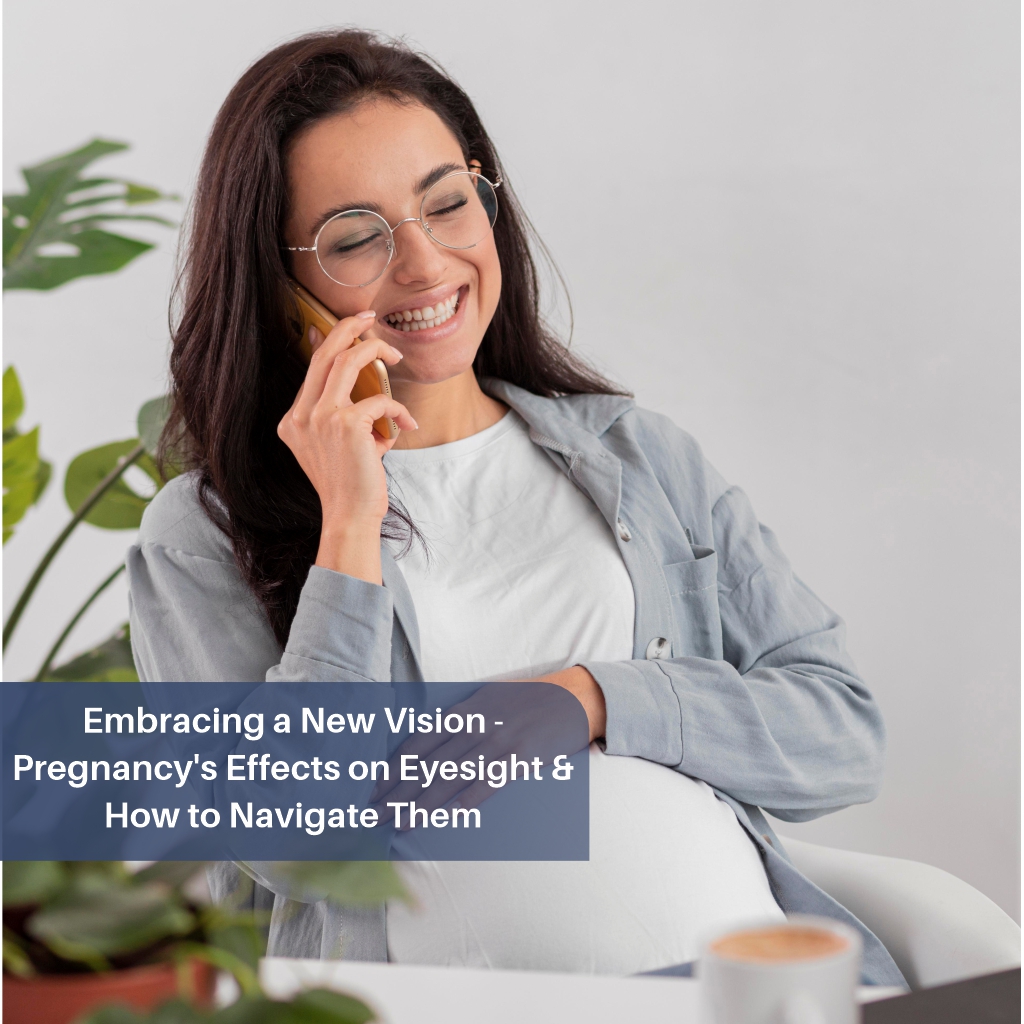Embracing a New Vision – Pregnancy’s Effects on Eyesight and How to Navigate Them
From Cold Storage to Warm Embrace: The Magic of Frozen Embryo Transfer (FET)
September 29, 2023The Crucial Role of Hormones in IVF Treatment
October 31, 2023Pregnancy isn't just about baby bumps; it's an emotional and physical rollercoaster. While the common tales revolve around swollen feet and growing girth,

Pregnancy isn’t just about baby bumps; it’s an emotional and physical rollercoaster. While the common tales revolve around swollen feet and growing girth, few expect that pregnancy can also throw your vision a curveball. Vision changes during pregnancy are more common than you might think, and they run the gamut from minor niggles to substantial sight shifts. Join us on this journey to uncover the various vision transformations, the ‘why’ behind these changes, and the ways to navigate them.
- Hormonal Fluctuations:
Pregnancy rides the hormonal wave, with estrogen and progesterone leading the charge. These hormonal surges don’t just affect your mood and body; they also set their sights on your peepers. Here’s a glimpse of how these hormonal twists can transform your vision:
a). Dry Eyes: Hormonal changes can lead to a reduction in tear production, causing dry eyes. This can result in discomfort, redness, and sensitivity to light.
b). Blurred Vision: Hormones can affect the cornea’s shape and thickness, leading to temporary changes in vision. This may result in blurred or distorted vision. - Increased Blood Volume and Pressure:
During pregnancy, the body ramps up blood volume and pressure to support both the mother and the growing baby. This can directly affect the eyes, giving rise to:
a). Cornea Swell: The uptick in blood volume can plump up the cornea, causing changes in how you see. For some, it’s a temporary stint as a nearsighted observer during pregnancy.
b). Glaucoma Alert: In unusual cases, the increased blood pressure can hike up the risk of glaucoma, a condition that takes a toll on the optic nerve. Keeping an eye on your eye pressure during pregnancy is vital, especially if you have a family history of glaucoma or other risk factors. - Gestational Diabetes and Vision:
Pregnancy can also give rise to gestational diabetes, a temporary diabetes type that emerges during pregnancy. Gestational diabetes can impact vision in various ways:
a). Vision Haze: Elevated blood sugar levels may trigger lens swelling, causing blurriness in vision.
b). Risk of Retinopathy: Poorly managed diabetes can raise the odds of diabetic retinopathy, a condition that harms the retina’s blood vessels, posing a potential threat to your sight. - Preeclampsia and Vision:
Preeclampsia, a severe condition that can emerge during pregnancy, is identified by elevated blood pressure and harm to vital organs like the liver and kidneys. Occasionally, preeclampsia can also influence eyesight:
a). Vision Changes: Warning signs may encompass blurred vision, light sensitivity, and even brief episodes of vision loss.
Managing Vision Changes During Pregnancy
- Keep Up with Eye Check-ups: It’s essential to stay on top of regular eye examinations throughout your pregnancy to track any vision shifts.
- Handle Gestational Diabetes: If gestational diabetes arises, visit your healthcare provider to steer your blood sugar in the right direction, reducing the chances of vision-related complications.
- Tame Those Hormones: Pregnancy’s hormonal twists are part of the package, but a balanced diet and a healthy lifestyle can help ease some of the more pronounced vision changes.
- Tackle Preeclampsia: Timely detection and management of preeclampsia are a must. If you encounter sudden vision shifts or other worrisome symptoms, don’t hesitate to reach out to your healthcare provider.
Pregnancy is a beautiful and life-altering experience, but it can bring unexpected shifts in your vision. While these changes are usually temporary and clear up after childbirth, staying informed and taking proactive measures to safeguard your eye health is crucial. Regular eye examinations and open communication with your healthcare provider are vital to ensure the health of both you and your baby. Embrace the adventure of pregnancy, including its unexpected surprises, and take comfort in the likelihood that your vision will likely return to its pre-pregnancy state once this journey is over. For further information, please call on 02228990202/ 09136351313.
